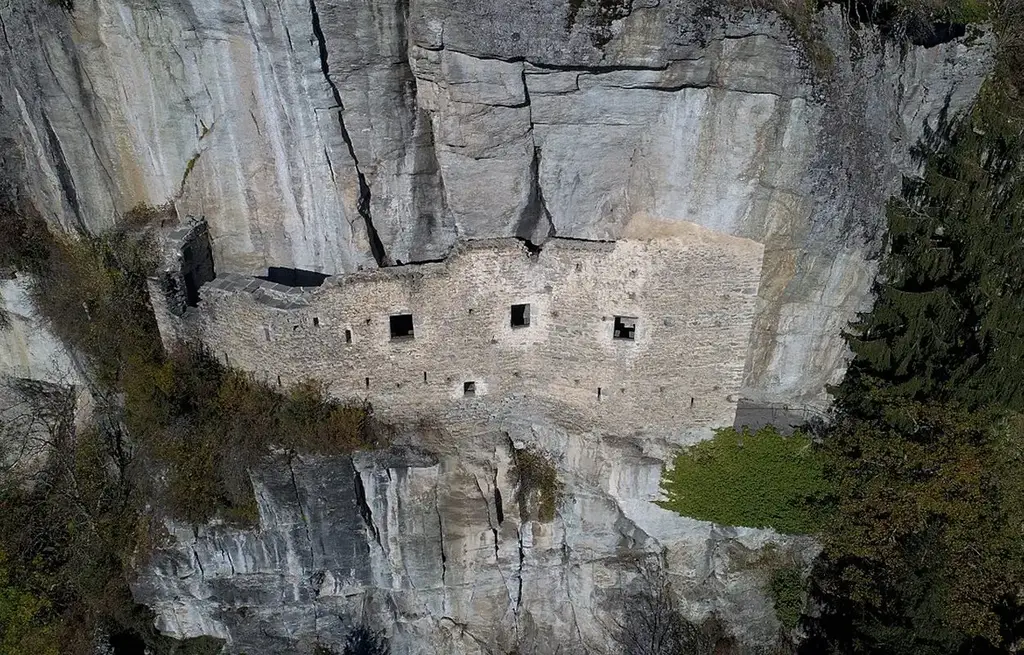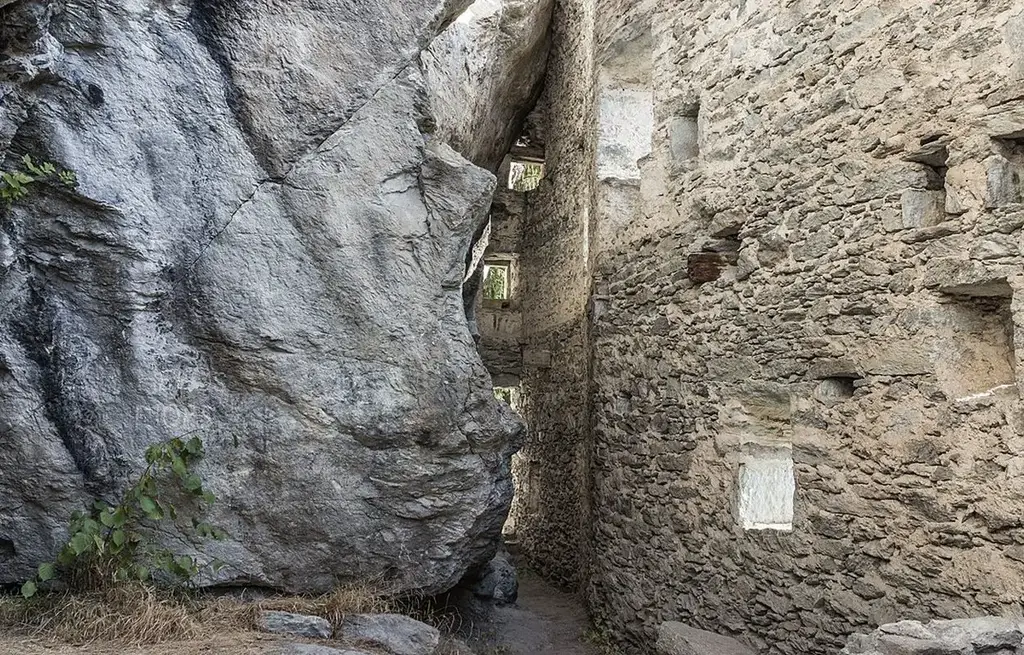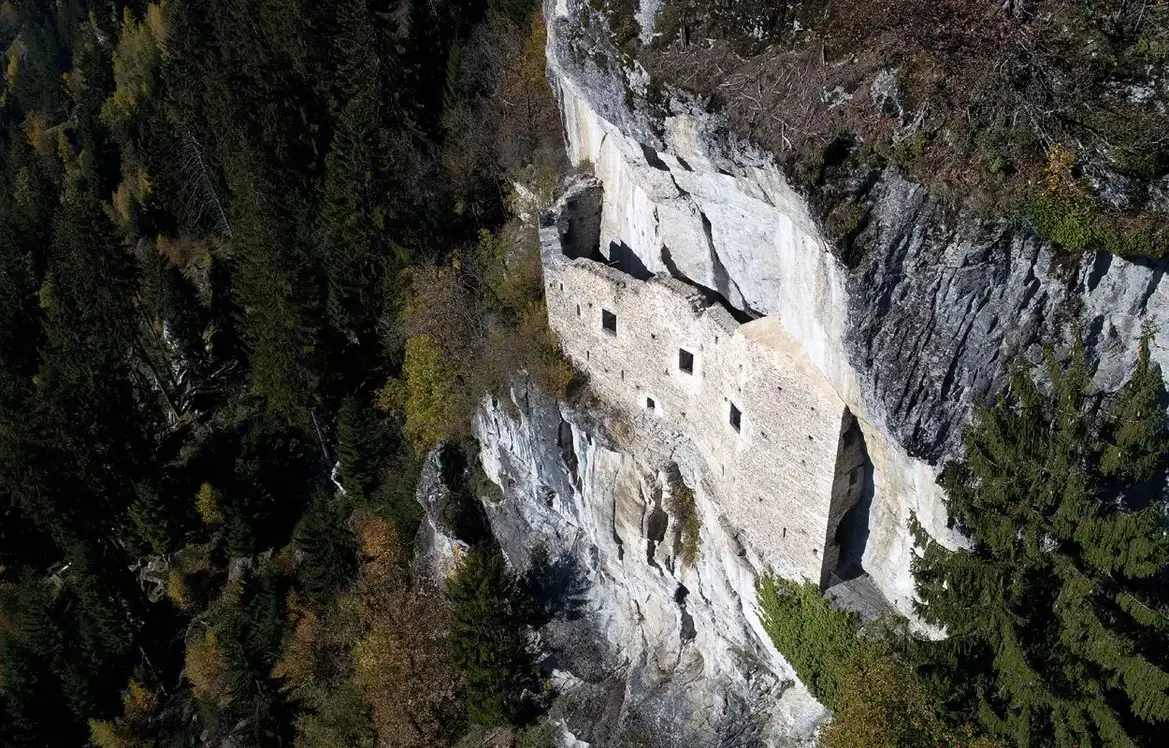Kropfenstein Castle is a ruined höhenburg (hillfort) type castle, located on the edge of a vertically sloping rock face in the municipality of Waltensburg/Vuorz, Switzerland.
Little evidence survives as to the provenance of the castle; however, dendrochronological dating of architectural timbers suggests that Kropfenstein was constructed around 1312.
Cave castles first appeared in Switzerland in the 14th and 15th centuries, utilising natural caves and grottos for the construction of residential or refuge castles.
Kropfenstein Castle follows the edge of the cliff that makes its shape very irregular in appearance, utilising an overhanging rock shelf in which the fortifications were positioned to serve as a defensive residence for a local distinguished family.
The castle’s plan is divided by two transverse walls containing several rooms, consisting of living quarters, a kitchen and store rooms. The castle gate is on the narrowest side and leads to the basement of what was originally a three-story structure with remnants of beam holes and windows with seating niches.
The name of Kropfenstein goes back to the Middle High German word “Kropf” (meaning an outgrowth of the neck or growth) and is likely associated with the small noble family of von Kropfenstein from Luven in the district of Surselva that may have built or acquired the castle.

The Kropfenstein’s were among the most respected families in the Bündner Oberland in the late Middle Ages, first appearing in historical records during the 14th century with a Bürcli von Kropfenstein mentioned in 1335.
The Kropfenstein line died out in the 15th century whilst a branch of the family continued to live in Luven, resulting in Kropfenstein Castle falling into disrepair and being eventually abandoned.
Header Image Credit : Adrian Michael – CC BY-SA 3.0






